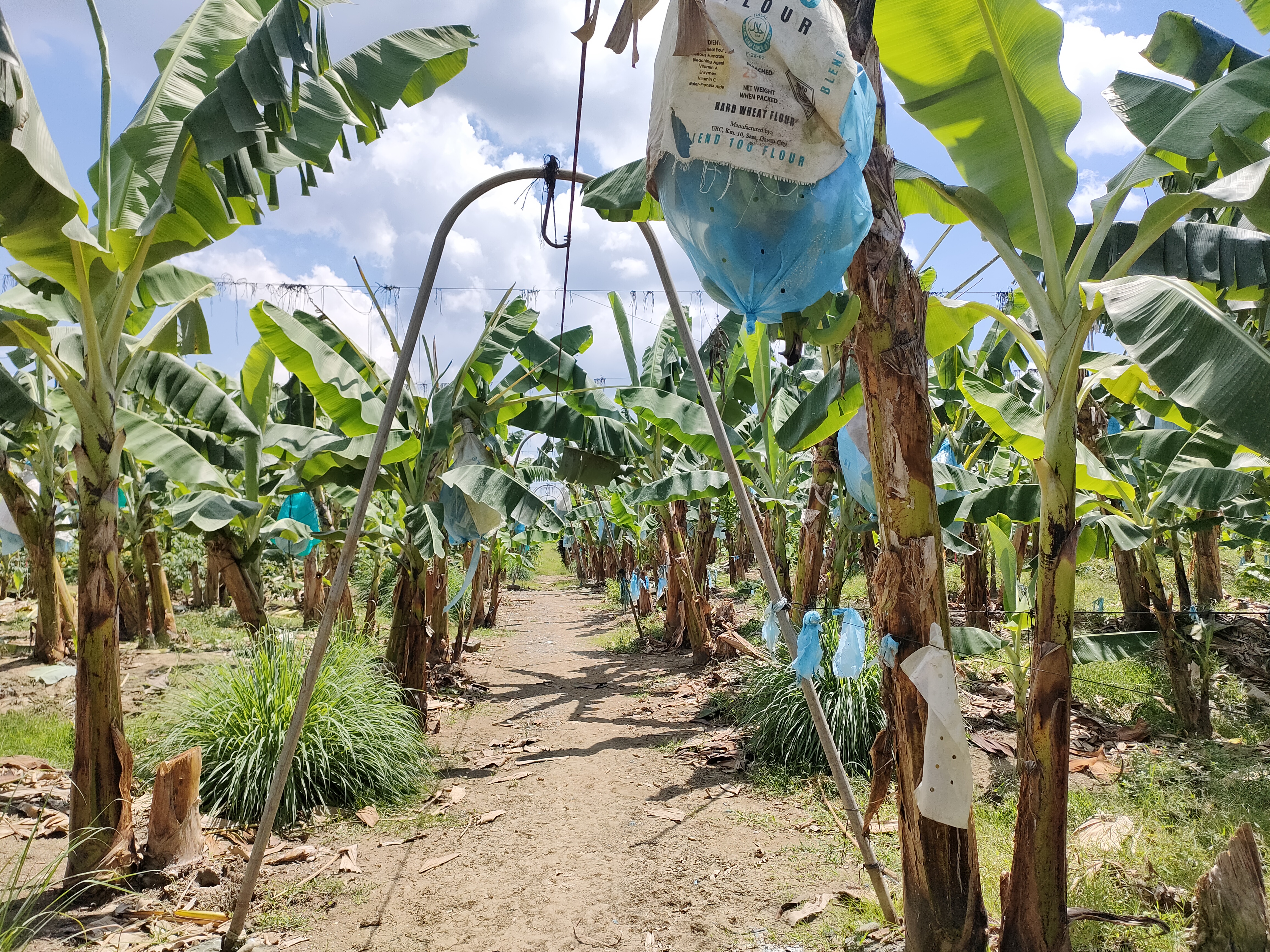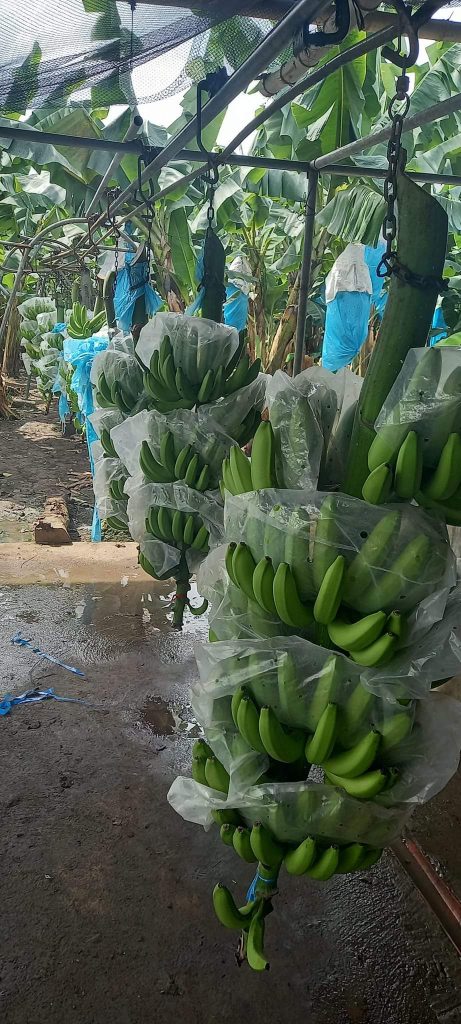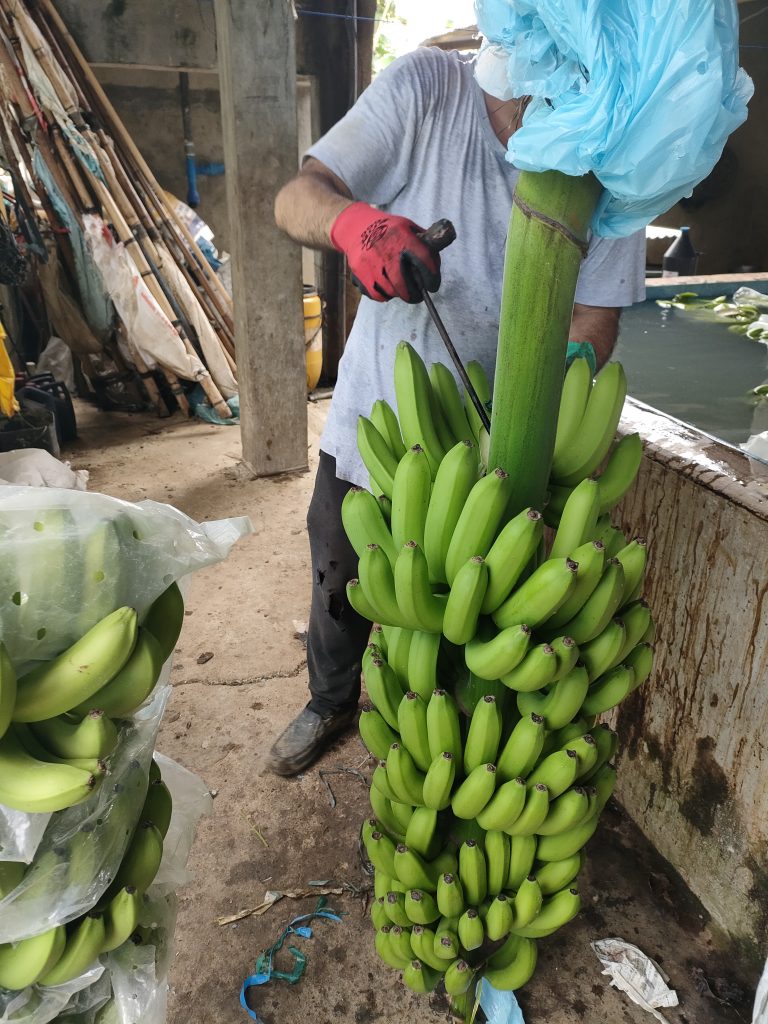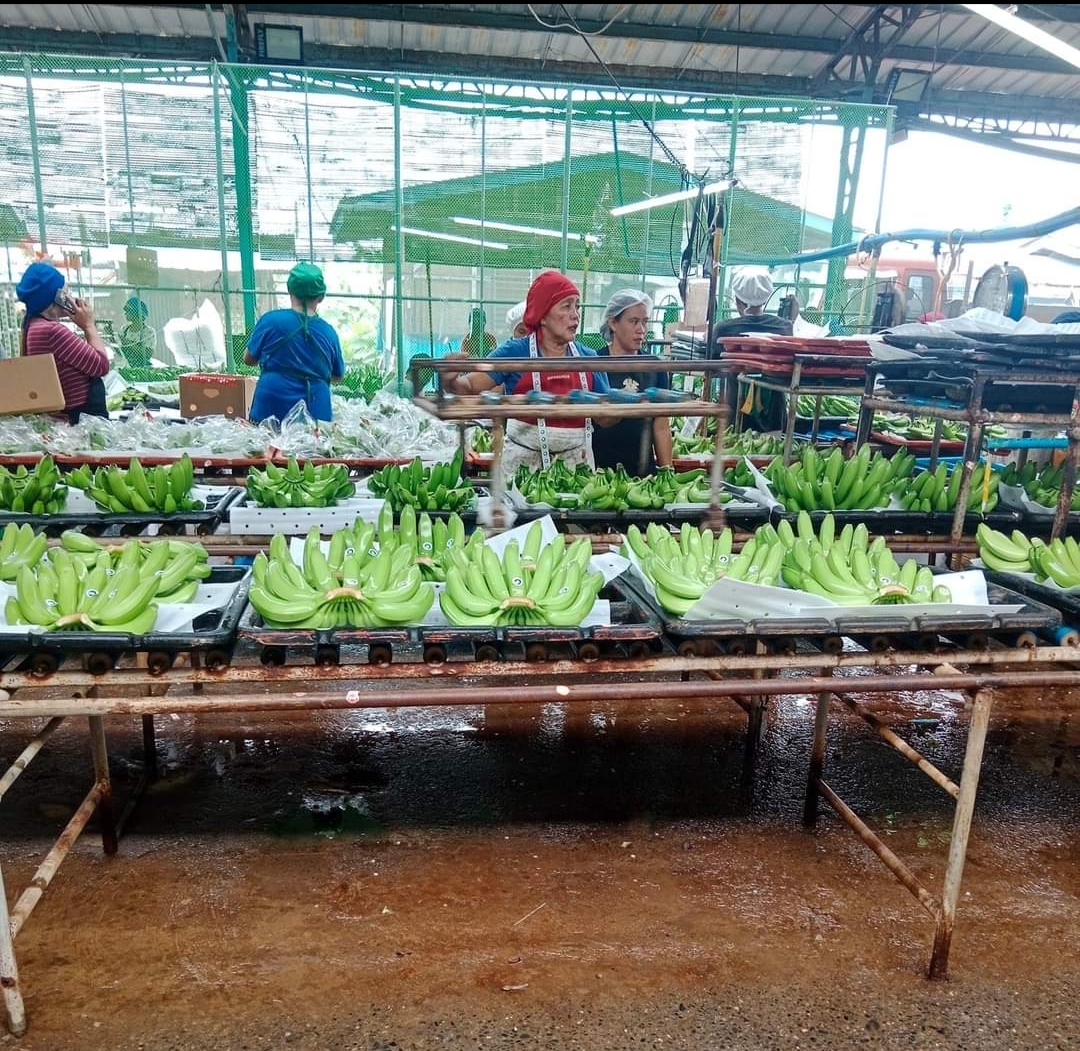Banana Yield, Harvest, Processing and Storage

This post is also available in:
This post is also available in:
![]() Español (Spanish)
Español (Spanish) ![]() Français (French)
Français (French) ![]() Deutsch (German)
Deutsch (German) ![]() हिन्दी (Hindi)
हिन्दी (Hindi) ![]() العربية (Arabic)
العربية (Arabic) ![]() Türkçe (Turkish)
Türkçe (Turkish) ![]() Português (Portuguese (Brazil))
Português (Portuguese (Brazil))
Banana cultivation is difficult and time-consuming; sufficient attention must be given from planting till export. The fruit banana is delicate and fragile. Being perishable and it deteriorates quickly. The aim is to obtain the best tissue to plant and produce a consistently high-quality banana plant after six months in the laboratory.

Banana Yield and Harvesting
Depending on the species, the variety, the region, the age of the plants, the planting distances, the environmental conditions, and the cultivation practices applied, the yield can vary between 30 and 173 tones per hectare (12 to 70 tones per acre).
Six to eight months after planting and ten to twelve weeks after bagging, the mature bananas are harvested. Keep in mind that banana is a climacteric fruit and continues to ripen after harvest. For this reason and to facilitate exporting of the fruits over long distances, most banana farmers harvest the fruits at the pre-climacteric green stage when they still have an angular cross-section.
Harvesting equipment needs to be thoroughly cleaned both before and after each operation. The caliper should be constantly calibrated and validated. As banana quality inspectors, we must measure the finger calibration to a standard of no less than 35 and no more than 48.
Most lowland farms may use cable systems to move bunches to the packinghouse after harvest. Extra precautions, such as inserting foam or plastic between hands, should be used to reduce bruising and prevent bunches from coming into contact with the soil and picking up dirt. The hands are detached from the bunch stem in certain farms, such as those in the Highland region without cableways.
Post-harvest handling practices are important to meet the quality export-grade requirements of bananas on the market and to ensure the consumer’s safety and satisfaction.
Packing Operation Flow after Harvesting
- Quality checking at Packing shed or Patio – Removal of Outright rejection defects such as fruit-rot-infected bunches. Cleaning and removal of Mealy bugs and Scale insects (if present).

- Dehanding of bunches – Separating the banana hand (fruit) from the banana stalk (stalk)
- Selecting, washing, and sorting – Washing, removing defects, and classifying (grading) each hand.

- Weighing – 13 Kg net for fruit weight
- Post-harvest treatment – Application of chemicals to prevent crown rot and shelf-life enhancer
- Labeling and foam inserting – Putting stickers on the banana for branding and inserting P.E foam on each hand to avoid pack bruises.
- Packing – Packed in vacuum bags and placed inside a corrugated carton box, with padding sealed.
- Box coding – Each box should be identified with a traceability code (i.e., time and day of packing, packinghouse number, and grower code/packer code).
- Loading – Finish product will be loaded into a refrigerated container at 13.7 degrees Celsius.

Post-harvest defects of Banana that are unacceptable for quality grade.
Please find the list of defects below:
1. Malformed Hand (Bowl-shaped) 26. Sooty Mold 51. Mealy Bug
2. Malformed Hand (Loose Fingers) 27. Brown Cracked Peel 52. Neck Rot
3. Malformed Hand (Three Layers) 28. Scale Insects 53. Ripe & Turning
4. Malformed Hand (Unbalanced Shoulders) 29. Nipple-like 54. Withered Pedicel
5. Malformed fingers 30. Flowers 55. Crown Mold
6. Chimera 31. Gel Latex 56. Fungal Scald
7. Fused Fingers 32. Latex Stain Old
8. Tip Constriction (Finger Tip Rot) 33. Latex Stain New
9. Tip Constriction (Mokillo) 34. Point Scar
10. Fruit Spot (Diamond Spot) 35. Crown Ride Scar
11. Fruit Spot (Pitting Disease/Johnson spot) 36. Scratches
12. Finger Rot 37. Scarring New
13. Cigar end 38. Scarring Old
14. Knife Cut (Old) 39. Leaf Scar
15. Knife Cut (Fresh) 40. Undercal
16. Split feel 41. Overcal
17. Injection Damage 42. Full Grade
18. Neck stumps 43. Too Few Fingers
19. Broken crown 44. Too short
20. Chemical Residue` 45. Grease
21. Crown Ride Mutilated 46. Yellow Blossom end
22. Crown Ride Bruise 47. Dirt
23. Mutilated Finger 48. Peel Rot
24. Neck Injury 49. Sunburn
25. Bruise 50. Soft Green
Soft Green is a common defect. Commonly, the buyer allows 3% of the total number of boxes of a one-full-load container of Soft green bananas. If it exceeds more than that percentage, the buyers will claim damage from the supplier.

Precooling and Storage of Banana
After harvest, precooling helps maintain the banana quality during post-harvest storage. This could serve as a springboard for more intervention research to decrease post-harvest losses and improve the marketability of bananas. Fruit intended for distant and export markets should be precooled significantly to increase shelf life. Fruit should be precooled within 10 to 12 hours from harvest to slow down ripening, decrease shriveling, and decrease the risk of disease outbreak and spread. The ideal storage temperature for bananas is 13.7 degrees Celsius. It is important to allow the removal of ethylene from the storage areas to decrease the ripening rhythm. Finally, in some cases, salicylic acid treatments can be applied to the harvested banana fruits to further delay ripening.

References
- https://www.freshknowledge.eu/en/knowledge-database/crops/banana/harvest-practices-for-banana.htm
- https://agmarknet.gov.in/Others/CPBANANA.pdf
- https://www.science.gov/topicpages/b/banana+fruit+ripening
Banana: Crop History, Nutritional Value and Health Benefits
Banana Plant Information & Environmental Requirements
Banana Plant Care – Commercial Cultivation of Bananas
Soil Requirements and Land Preparation for Bananas
Banana Planting Distances and Support Systems
Banana Water Requirements & Irrigation Systems
Banana Nutrient Requirements and Fertilization Program
Banana Plant Protection – Major Banana Diseases
Banana Plant Protection – Common Pests of Banana Plants
Banana Yield, Harvest, Processing and Storage









































































